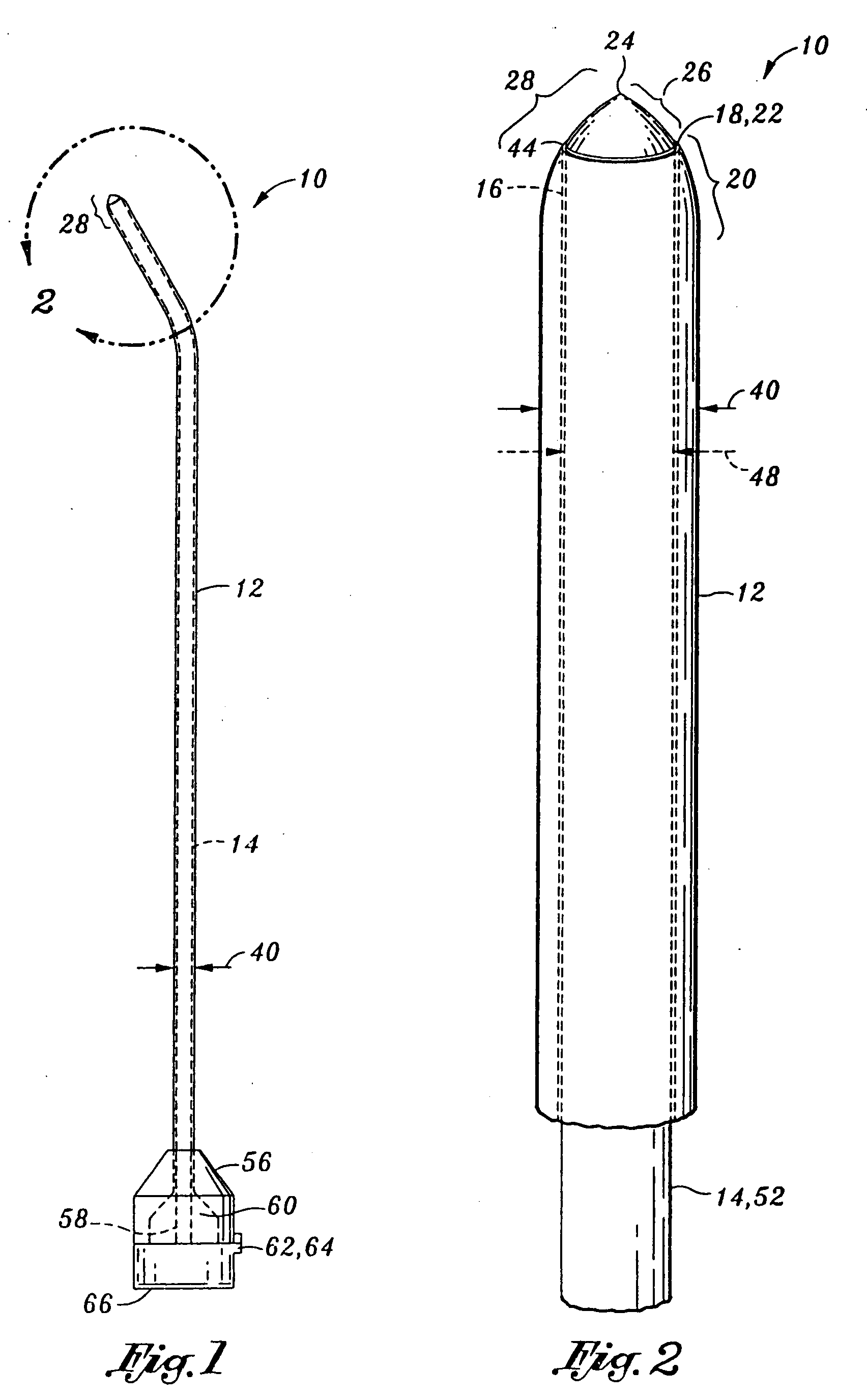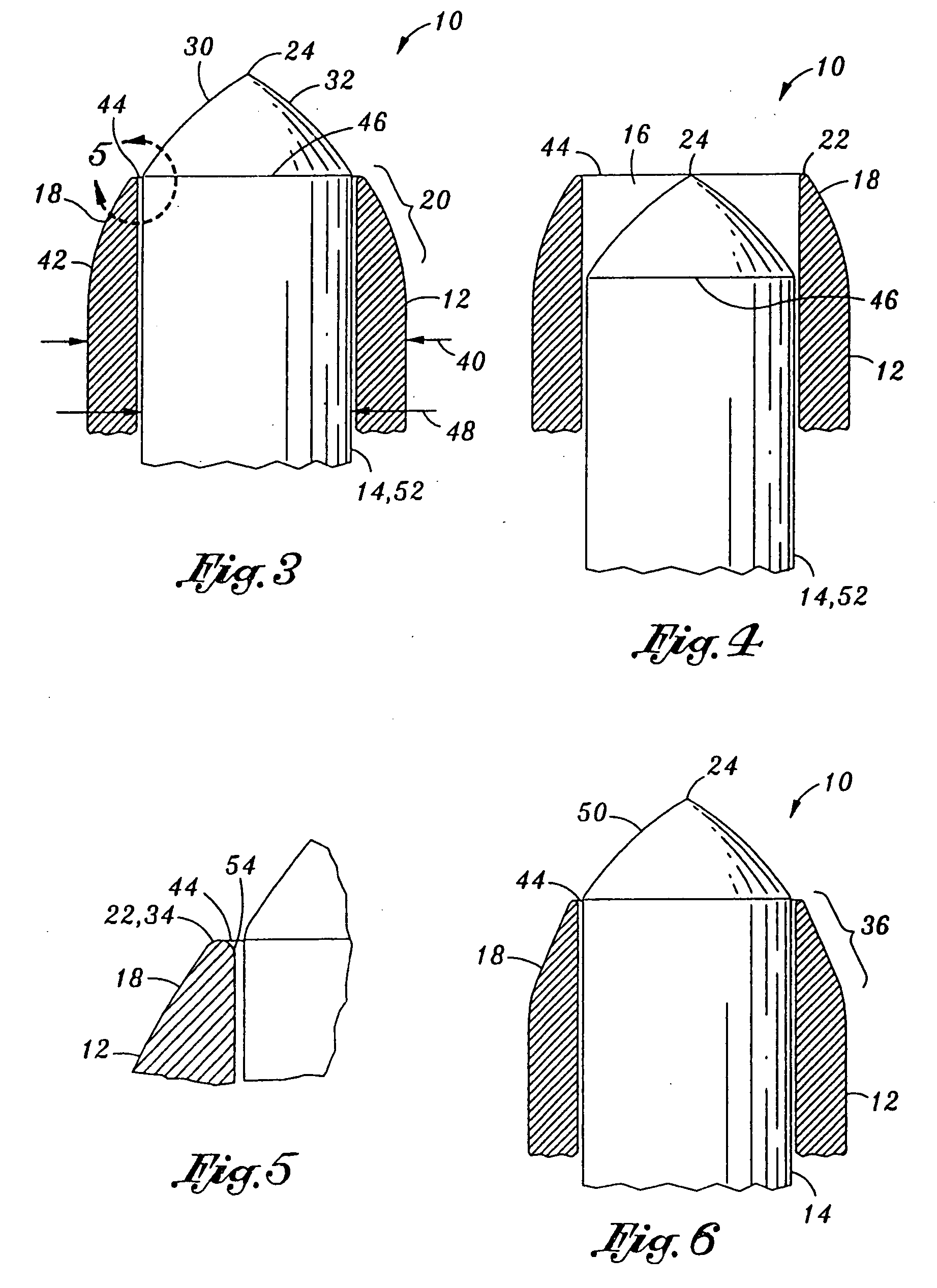Cleveland round tip (CRT) needle
a needle and round tip technology, applied in the direction of guide needles, intravenous devices, catheters, etc., can solve the problems of ineffective treatment, easy damage or penetration of sharp needles, use of sharp cutting points or edges, etc., to facilitate the penetration of cannulas, facilitate the delivery of medication, and mitigate penetration injury
- Summary
- Abstract
- Description
- Claims
- Application Information
AI Technical Summary
Benefits of technology
Problems solved by technology
Method used
Image
Examples
Embodiment Construction
[0024] Referring now to the drawings wherein the showings are for purposes of illustrating the preferred embodiment invention only and not for purposes of limiting the same, FIG. 1 illustrates a needle assembly 10 for mitigating penetration injury during an injection into a desired area. The embodiments of the present invention described herein may easily penetrate to the desired area, such as a target nerve area adjacent a spinal cord, as may be common in peripheral nerve blocks, sympathetic nerve blocks, and transforaminal injections. As mentioned above, such injections may include those for peripheral nerve blocks, sympathetic nerve blocks, or transforaminal injections, or other types of injections. However, in contrast to prior art needles, embodiment for the present invention are configured to avoid further penetration into the desired area subsequent to the assembly 10 being properly positioned within the desired area, thereby substantially eliminating unintentional penetratio...
PUM
 Login to View More
Login to View More Abstract
Description
Claims
Application Information
 Login to View More
Login to View More - R&D
- Intellectual Property
- Life Sciences
- Materials
- Tech Scout
- Unparalleled Data Quality
- Higher Quality Content
- 60% Fewer Hallucinations
Browse by: Latest US Patents, China's latest patents, Technical Efficacy Thesaurus, Application Domain, Technology Topic, Popular Technical Reports.
© 2025 PatSnap. All rights reserved.Legal|Privacy policy|Modern Slavery Act Transparency Statement|Sitemap|About US| Contact US: help@patsnap.com



